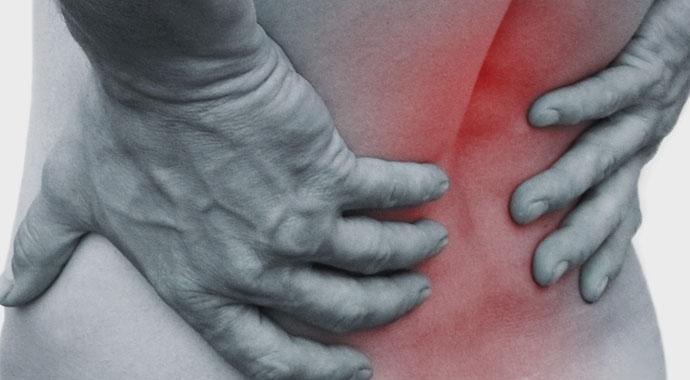Before you get the goods….
A 2004 published paper in Integrative Medicine titled How Chiropractors Think and Practice: The Survey of North American Chiropractors, indicated that “97.8% of the chiropractors give exercises to their patients.” What? 97.8%? Is this really true? It knocked Patrick Gentempo enough for him to remember it 8 years later. I was on the phone with him in 2012 when he mentioned this: “One stat has always stuck out for me Scott, I saw it a while back.” He remembers the stat perfectly. “Almost 98% of the Chiropractors prescribe exercises”.
Other stats included Stress reduction recommendations and spinal subluxation teachings which fell 10% below exercise recommendations.
At the time of speaking to Patrick I was developing software to assist me in giving exercises to my patients. I knew that my patients needed exercise to strengthen their weaker areas, but I found traditional demos and paper reminders to be incredibly time-consuming, unsatisfying, and the results were dismal. Finally, I stopped giving exercises because they took long to demonstrate and the patient typically returned needing a refresher or not following through with them at all. This created a problem for both my patients and I.
 I asked several colleagues if they prescribed exercises and most indicated that they did not. I no longer believe that 98% of Chiropractors give exercises and even if they were I don’t have the confidence that patients were doing them properly or regularly.
I asked several colleagues if they prescribed exercises and most indicated that they did not. I no longer believe that 98% of Chiropractors give exercises and even if they were I don’t have the confidence that patients were doing them properly or regularly.
Clearly, this serious problem is widespread. Question: Do you Give Exercises?
To explore this further let’s start with the question, Why give Exercises? Simon Sinek’s book Start with Why, illustrates that everyone decides on their why.
When I do a corporate talk, I pose the question to the audience “Is exercising daily good for you?” 100% of the room raises their hand. I then ask the question, “Who regularly exercises?” Sadly the number drops to 10%. Next I say, “So if I simply show you what to do then I will only get 10% of you to do them, however if I can inspire you to exercise then I really improve numbers” and the heads nod. My workshop starts with answering the question for the group, why exercise will help them decrease pain, help with emotions, and change how they look. In other words until they knew the why, they were never going to do it.
Let’s begin with one of the best effects of exercise. The national bestseller Spark, The Revolutionary New Science of Exercise and the Brain, by John Ratey, MD, shows the long term studies and experiments that prove exercise changes the brain, and if you change the brain you necessarily change the body. One case study showed that when a school’s physical education class switched from teaching sports to teaching fitness, the children started scoring higher on their standard mathematics and science scores. In other words, they were smarter. In fact, their graduation rate now boasts 97%. John Ratey further states that in 2001, fit kids scored twice as well on academic tests as their unfit peers. One of the key distinctions the program makes is that it switched from having students avoiding getting nailed in dodge ball to doing push ups.
So what is it about strengthening muscle that changes the brain? Neuroplasticity is defined as “capacity of neurons and neural networks in the brain to change their connections and behaviour in response to new information, sensory stimulation, development, damage, or dysfunction.” (Webster) This occurs when we use the muscular system as input to the nervous system and ultimately to the brain. As Nobel Prize winner Robert Sperry states “95% of the stimulation and nutrition to the brain comes from movement of the spine.” If you want to see this live, go visit an assisted living home and notice that those in a wheelchair will show the fastest decrease in cognitive function with the first area affected being short term memory. If it’s happening to you, it may be because you sit too much and don’t move enough. The science behind this is all relatively new but it is common sense. Just watch a child. A child never stops moving during the most important learning years as the brain is maturing.[quote_center]
Crawling is a common exercise I will prescribe to adults to help re-train cross pattern dysfunction
Chapter 8 of Simon Sinek’s, book is titled “Start with why but know how.” He explains how lots of energy and emotion is not enough. I personally experienced this when I was 21 when I herniated 2 lumbar discs with improper muscle engagement during exercise. I was in university using improper gym techniques. So, even if your Why is large (you know your patients need their rehab), if you give the wrong exercises (not sure of the How), then harm can ensue. It’s not just about strengthening, stretching or moving, Tony Little said it best “It’s Technique!”
There are many relationships in the body to consider when properly rehabilitating a low back, or any body part for that matter.
Sherrington’s Law of reciprocal inhibition must be considered when giving exercises to your patients
Question: What is your favorite low back exercise?
If there is further interest, I would be happy to write subsequent articles that would demonstrate muscles involved in stabilizing the pelvis, how to test their strength, and what exercises to give. Other articles could include how to create a profit center with exercise prescription and more. I have improved my patients lives and made an income with home care recommendations.
To start, I will paraphrase Gray Cook’s famous line: Don’t build performance on top of dysfunction.
Begin by understanding if there is an imbalance by muscle testing.
Three muscles I like to muscle test which can relate to low back or pelvic weakness are the Quadratus Lumobrum, Gluteus Maximus, and Gluteus Medius. The videos are from my CE4You course titled Muscle testing and Exercise Prescription. The course is in the editing stages and will be available in at CE4You.com
The three exercises I would give for Low Back are: Dead Bug, Side Bridge, and Bird Dog. These videos are available from myRxX.com, my video exercise prescription site.
Quadratus Lumborum
The importance of the QL becomes evident when you look at its anatomy and function. First, the medial fibers that attach to the spine also connect the ribcage to the pelvis. These medial fibers play a crucial role in stabilizing your torso in the frontal plane. If you’re holding a heavy briefcase in your right hand, the left QL contracts to keep you from leaning to the right.
If the QL is weak, it would be indicated in a muscle test where the patient holds the sides of the table while the doctor challenges the QL muscle using the legs as a lever. The exercise I will prescribe for a weak QL is a side bridge.
The side bridge is a great way to engage the QL muscle and Gluteus Medius. This a level 1 exercise that has many progressions.
Gluteus Medius
Gluteus medius is an abductor of the lower leg and when you really break down the function of the gluteus medius, you see that it is far more valuable as a pelvis and lower extremity dynamic stabilizer than it is a pure hip abductor. A simple Trendlenberg stance may reveal a weakness; however, the strength test will be more quantative. Further, the QL works with the contralateral glute medius muscle when you’re walking. So, if you’re walking with a heavy briefcase in your right hand, the left QL and right glute medius are firing hard to maintain correct posture and gait. When both are weak, then knee pain can develop as you have lost your gait stabilizers. The side bridge helps strengthen both the QL and Gluteus Medius muscles.
Gluteus Maximus
The importance of the gluteus maximus is twofold; it acts as a pelvic stabilizer, and is a major extensor of the lower limb. If one or both left and right glutes are weak, then this imbalance will put a strain on the lower back and hamstrings.
If the glutes are weak, this can indicate an instability, or that the contralateral erector is weak. The erector acts to stabilize and anchor the pelvis to the table during the test. When you test gluteus maximus muscle you need to determine if it’s a weak muscle or a weak anchor.
The bird dog is a great way to strengthen the glute max while re-educating the erector spinae muscles. The lack of coordination will be apparent, but with practice, will improve quickly. The bird dog has over 10 progressions to keep the muscles and CNS challenged.
When you rehab the low back you also have to re-educate the firing pattern. The dead bug exercise does this, and it is also an important lumbar stabilizer. It’s also a great exercise for working the whole abdominal region. Dead bugs also improve coordination of movement between the arms and legs.
Dead bug has several progressions, again important to a proper rehab program.
Last word…progressions are a must. Without further challenging the muscles, you lose the benefit because the brain responds to change. And remember to Think Different.
 Dr. Scott has been practicing Chiropractic for over 18 years. With a passion for his profession as a Chiropractor and a thirst to continue growing, he owns and operates a full integrative clinic, with 4 Chiropractors, 6 Massage Therapists, Naturopathy and TCM.
Dr. Scott has been practicing Chiropractic for over 18 years. With a passion for his profession as a Chiropractor and a thirst to continue growing, he owns and operates a full integrative clinic, with 4 Chiropractors, 6 Massage Therapists, Naturopathy and TCM.









